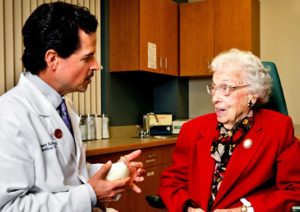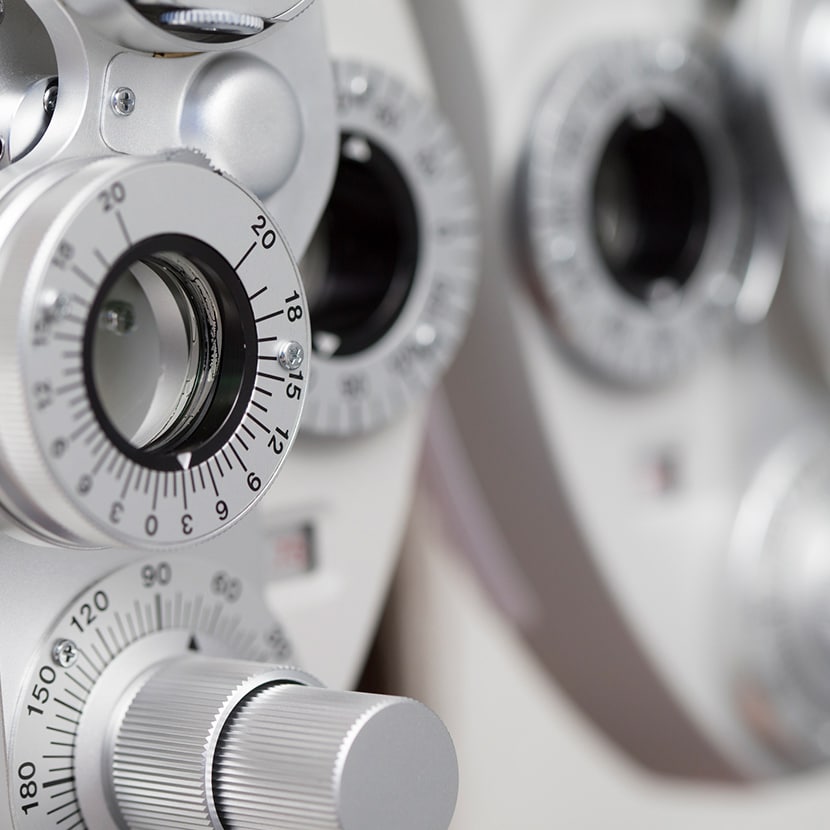Laser-Assisted Cataract Surgery
in Albany NY
Recent innovations in cataract surgery now make it possible for cataracts to be removed with even greater precision and accuracy. Cornea Consultants of Albany surgeons are among the select few in the U.S. to offer the FDA-approved cataract surgery treatment with Laser-Assisted Cataract Surgery.

As we age, it’s commonplace for the lenses of our eyes to develop clouding, a cataract. If allowed to progress, a cataract can eventually cause blindness in the affected eye. In fact, cataracts are the leading cause of blindness worldwide. In the U.S., over 22 million people over the age of 40 have cataracts. As the population ages, it’s expected this number will grow.
At Cornea Consultants of Albany, we are experts with cataract surgery, replacing clouded lenses with artificial intraocular lenses. For an added level of precision, we offer laser-assisted cataract surgery.
How is laser cataract surgery performed?
For background information on cataracts, click here.
Once a cataract has developed in the lens of an eye, the only treatment is surgery to remove the lens and replace it with an artificial lens. If left untreated, the cataract will continue to progress, eventually leading to blindness in the eye. But there is no reason to wait, as cataract surgery is one of the safest, most effective surgeries in the world. In the U.S., the success rate with this surgery is over 98 percent.
At Cornea Consultants of Albany, we use minimally invasive, small-incision, no-stitch cataract surgery known as phacoemulsification (phaco) surgery. We utilize a femtosecond laser for greater precision and accuracy. By using this FDA-approved laser option, we can bypass the need to use a surgical blade. The surgery is remarkably fast, requiring only five to 10 minutes. Here’s how we do it.
The femtosecond laser system
The femtosecond laser system first creates a 3D image of your eye for guidance. This allows our Cornea Consultants surgeons incredible accuracy when mapping the incision location.
Next, the femtosecond laser creates the corneal incision and removes the anterior capsule of the lens. This gains access to the cataract-clouded lens. The incision is very small. Now the laser makes a series of cuts in the cataract-clouded lens. A probe is then inserted and it delivers ultrasound energy that breaks up the cloudy lens. At the same time, the probe uses suction to gently remove the small lens pieces. The earlier scoring of the lens reduces the amount of ultrasound energy needed to break up the cataract lens. If you have astigmatism, we may use the laser at this point to create peripheral corneal incisions. These reduce the condition. Otherwise, the new intraocular lens (IOL) choices also can correct for astigmatism.
The final step of the surgery is to insert the artificial intraocular lens. Today’s advanced IOLs are foldable and are inserted through the same small incision through which the original lens was removed. You can read about your options for IOLs at Cornea Consultants of Albany by clicking on this link. The small incision size doesn’t require any sutures; it will heal on its own.
What are the advantages of laser-assisted cataract surgery?
At Cornea Consultants of Albany, we believe in staying at the forefront of eye surgery technology and the femtosecond laser is a jump forward. Here are some advantages and benefits for our patients in using the femtosecond laser for cataract surgery:

- The computer guidance provides greater surgical precision.
- All incisions can be made with the laser. This removes the use of any surgical blades.
- Laser scoring of the clouded lens before removal reduces the amount of ultrasound energy needed to break up the lens.
- When opening the capsule, the laser creates far less potential for tearing the capsule than when using forceps.
- When breaking up the cataract, the laser creates less heat, which lowers the risk of damaging the incision.
Who is a good candidate for laser-assisted cataract surgery?
If you’re suffering from the increasing cloudiness that’s due to the development of a cataract in one or both of your eyes, the odds are you’re a great candidate for laser-assisted cataract surgery at Cornea Consultants of Albany. As mentioned above, there isn’t a cure for a cataract-clouded lens other than removing it and replacing it with an artificial intraocular lens.
These procedures are remarkably successful, and there are few limits on patients being able to have the benefit of adding a femtosecond laser to these procedures. We will discuss any possible issues with you during your consultation.
How long does laser-assisted cataract surgery take?
These are amazing procedures that only take 5-10 minutes. The entire process, allowing for sedation and placing numbing drops in your eyes, takes only a half-hour.
What is recovery like after laser-assisted cataract surgery?
 Recovery for laser-assisted cataract surgery at Cornea Consultants is the same as traditional blade surgery.
Recovery for laser-assisted cataract surgery at Cornea Consultants is the same as traditional blade surgery.
After your brief surgery, we’ll place an eye patch on your treated eye. We provide you with a protective shield to wear when sleeping for the next several days. Your vision will be blurry at first, but this rapidly improves in just a day or two. Your eye may itch somewhat, but you cannot touch the area at all. You also need to be cognizant of avoiding actions that increase blood pressure on your face. Things such as heavy lifting, bending over, and other actions that move blood to your face are out. We provide you with eye drops that prevent inflammation and infection. They also control the pressure inside your eye when healing.
Full healing can take up to two months, but you can return to normal activity in just a few days. You may or may not require glasses for some tasks after your surgery. This depends on the replacement intraocular lens you selected. If your other eye also has a cataract, we usually schedule the second surgery one to two months after the first.
Will I need glasses after having laser-assisted cataract surgery?
Up until around the turn of the new century, patients having this surgery had only one option for a replacement intraocular lens, monofocal IOLs. As their name implies, monofocal lenses correct for one focal length of vision, either distance or up close. Patients would choose which option they wanted, usually choosing distance, and they would wear glasses for the other distance, usually for up-close vision such as reading.
That has changed with today’s technologically advanced IOLs. Now there are various options for multifocal IOLs that provide excellent vision at all distances. These new IOLs are amazing; they can even correct for astigmatism and presbyopia (the condition that is almost universal after the age of 40 where our eyes have trouble with up-close vision). You can read about the IOL options at Cornea Consultants here. If you choose to have your cataract replaced with one of these choices, you may not need eyeglasses for any distance again.
Is laser-assisted cataract surgery safer than traditional cataract surgery?
Thanks to its increased level of precision in making the corneal incision, laser-assisted cataract surgery is considered to be marginally safer. But both options involve incredibly low risks and have success rates that are off the charts. Laser surgery is also better for people who also have astigmatism if the laser is used to make peripheral corneal incisions.
Schedule Your Consultation Today
If you’re interested in learning more about laser-assisted cataract surgery please contact us for a consultation at 518.475.1515 or fill out our contact us form. We will discuss your needs and concerns, and determine your best course of action.




